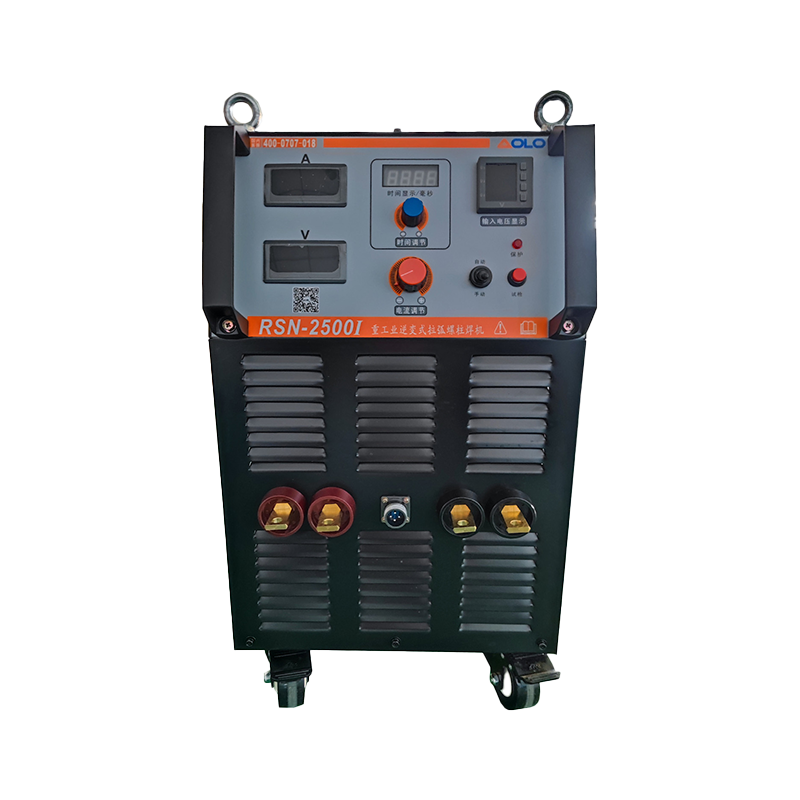NBC-315Y 220V/380V 300A IGBT Inverter Portable welder Built-in wire feeder 2T/4T MIG/MAG(GMAW)
Cat:Gas shielded welding machine
1、The machine adopts a phase-shifted full-bridge inverter main circuit...
See DetailsIn industrial safety terminology, the phrase hot work refers to any operation that produces heat, sparks, or an open flame, and which can potentially ignite flammable materials. Common examples include arc welding, gas welding, cutting, grinding, and brazing. The question often arises: Does stud welding fall under this category? The short answer is yes—a stud welding machine is considered hot work.
1. Understanding Hot Work
Hot work is defined in many safety standards, including OSHA (Occupational Safety and Health Administration) in the United States and NFPA (National Fire Protection Association) guidelines, as:
Any work involving burning, welding, or a similar operation that is capable of initiating fires or explosions.
The key factors that qualify a process as hot work are:
Generation of high heat.
Production of sparks or molten metal.
Potential to ignite combustible materials nearby.
2. What Is Stud Welding?
Stud welding is a process where a metal fastener (stud) is welded directly to a base metal or workpiece. A stud welding machine uses an electric arc to heat both the stud and the surface. Once the metals reach a molten state, the stud is pressed into place, and the weld solidifies.
There are two main methods:
Arc stud welding: Uses a controlled electric arc for a few milliseconds to a few seconds.
Capacitor discharge stud welding: Uses stored electrical energy for an even faster weld with less heat spread.
Regardless of the method, the process creates localized molten metal and often small sparks.
3. Why Stud Welding Qualifies as Hot Work
Stud welding meets the hot work definition because:
1. High Heat Generation – The welding arc can reach temperatures above 5,000°C (9,000°F), more than enough to ignite flammable gases, vapors, or solids nearby.
2. Sparks and Molten Metal – Even in fast capacitor discharge welding, tiny sparks or molten particles can be ejected from the weld zone.
3. Potential Fire Hazard – If combustible materials are present in the work area, they can be ignited by sparks or heat conduction through the workpiece.
OSHA specifically lists welding—including stud welding—under activities requiring hot work precautions.
4. Safety Implications of Stud Welding as Hot Work
Because stud welding is hot work, it is subject to the same safety protocols as other welding operations:
Hot Work Permit – In many workplaces, you must obtain a permit before starting stud welding in any area where flammable materials may be present.
Fire Watch – A trained fire watch person may be required during and after the work, to quickly respond if a spark ignites something.
Work Area Preparation – Remove or protect flammable items within the welding zone using fire blankets, guards, or shields.
PPE (Personal Protective Equipment) – Flameresistant clothing, welding gloves, safety goggles or a welding helmet, and hearing protection are typically required.
Ventilation – Adequate ventilation or fume extraction may be necessary to control welding fumes.
5. Special Considerations for Stud Welding
While stud welding often produces less spatter than some other welding methods, it still presents fire and burn hazards:
In confined spaces, heat and sparks can be concentrated, increasing risk.
On painted or coated surfaces, the process can produce hazardous fumes.
When welding onto large conductive structures, heat can travel and cause ignition away from the visible weld area.
Even shortduration capacitor discharge welding should not be assumed “safe” from a fire perspective—it still meets the hot work criteria.
6. Relevant Standards and References
Several recognized authorities classify stud welding as hot work:
OSHA 29 CFR 1910 Subpart Q – Welding, Cutting, and Brazing regulations.
NFPA 51B – Standard for Fire Prevention During Welding, Cutting, and Other Hot Work.
ISO 4063 – International classification of welding processes, which includes stud welding.
These documents emphasize that any process using an arc, flame, or sparkproducing tool in proximity to combustible materials is hot work.
7. Best Practices for Safe Stud Welding
To safely perform stud welding in compliance with hot work safety rules:
1. Assess the Area – Identify flammable liquids, gases, dust, or materials.
2. Isolate Hazards – Move flammable materials at least 35 feet away, or protect them with noncombustible shields.
3. Use a Permit System – Ensure authorization and safety checks before beginning.
4. Assign a Fire Watch – Especially in highrisk or enclosed areas.
5. Wear the Right PPE – Follow welding safety equipment requirements.
6. PostWork Monitoring – Continue fire watch for at least 30 minutes after welding.
A stud welding machine—whether using arc or capacitor discharge technology—is classified as hot work under industrial safety definitions. This classification is based on the fact that the process produces high heat, sparks, and molten metal capable of igniting nearby flammable materials.
Because of this, stud welding must be treated with the same fire safety precautions as other welding and cutting operations. By following recognized hot work safety procedures—permits, area preparation, PPE, and fire watch—you can perform stud welding efficiently while minimizing risk.

Contact Us